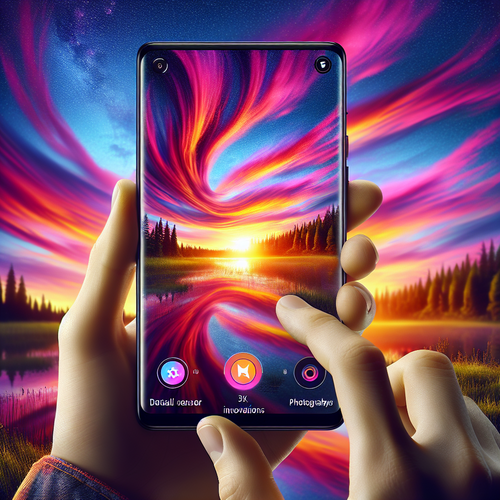
Camera Sensor Innovations: Advancements in Mobile Photography
Camera Sensor Innovations: Advancements in Mobile Photography
As mobile photography continues to thrive, the technology that powers our smartphones’ cameras is advancing rapidly. In this tutorial, we’ll delve into the latest camera sensor innovations that are enhancing mobile photography and what they mean for both everyday users and photography enthusiasts.
Prerequisites
- A smartphone with a modern camera.
- Basic understanding of photography concepts.
- Interest in technology and photography trends.
Understanding Camera Sensors
Camera sensors are crucial components of any camera system. They convert light into electrical signals, which are then processed to create an image. The quality and technology behind these sensors directly affect image quality, low-light performance, and the overall photographic experience.
Types of Camera Sensors
- CMOS (Complementary Metal-Oxide-Semiconductor): Common in smartphones for their efficiency and low power consumption.
- CCD (Charge-Coupled Device): Traditionally used in higher-end cameras for superior image quality but now less common in mobile applications.
- Bayer Array Sensors: The most common type used in mobile devices, utilizing a color filter array to produce colored images.
Latest Innovations in Camera Sensors
In recent years, several innovations have emerged that enhance the capabilities of mobile camera sensors:
1. Larger Sensors for Enhanced Light Capture
Mobile manufacturers are increasingly incorporating larger sensors in their devices. For example, the latest smartphones feature sensors that can capture more light, significantly improving performance in low-light situations. This is critical for users who enjoy capturing images at night or in dimly lit environments.
2. Multi-Lens Camera Systems
Many phones now come equipped with multiple camera lenses, each with distinct sensor technology tailored for specific tasks (e.g., ultra-wide, telephoto). This multifaceted approach enables users to take advantage of varied perspectives without sacrificing quality.
3. High Megapixel Counts
Brands like Samsung and Xiaomi are pushing the limits with stunning high-resolution sensors, featuring over 100 megapixels. These sensors allow for extremely detailed images but also require efficient processing power to handle the data involved.
4. Advanced Image Processing Techniques
Innovative algorithms now help enhance images post-capture. For instance, computational photography techniques like Night Mode and HDR (High Dynamic Range) utilize advanced processing to create stunning images that rival professional cameras.
5. AI Enhancements
Artificial Intelligence plays a significant role in modern mobile photography. AI-driven features can improve focus, adjust settings automatically for optimal conditions, and even suggest compositions based on user behavior.
Step-by-Step Guide to Utilizing New Camera Features
Step 1: Update Your Camera App
Ensure your camera app is updated to take advantage of the latest features. Manufacturers frequently roll out updates that optimize camera performance.
Step 2: Experiment with Camera Modes
Explore the different modes on your smartphone, such as Portrait, Night, and Pro Modes. Each of these utilizes the camera’s sensor capabilities differently. For instance:
- Use Night Mode for low-light conditions to improve clarity.
- Try Portrait Mode for beautifully blurred backgrounds.
- Experiment with Pro Mode for manual adjustments.
Step 3: Use External Lenses
Consider investing in external lenses that can attach to your smartphone. These can provide additional functionalities like fisheye or macro photography.
Step 4: Edit Your Photos
Make use of photo editing tools to refine your images. Applications like Lightroom or Adobe Photoshop Express provide excellent resources for enhancing photos taken with your smartphone.
Troubleshooting Common Camera Issues
While modern smartphones are designed to be user-friendly, there are common issues you may encounter:
Issue 1: Blurry Images
Solution: Ensure that you’re holding the phone steady. Use a tripod if necessary, especially in low light.
Issue 2: Overexposed Photos
Solution: Adjust the exposure settings in your camera app or try shooting in Manual Mode.
Issue 3: Slow Camera Launch Time
Solution: Close other apps running in the background to free up system resources.
Summary Checklist
- Keep your camera app updated.
- Explore different camera modes.
- Utilize external lenses to expand capabilities.
- Refine images using editing tools.
- Troubleshoot common issues efficiently.
By embracing the latest in camera sensor innovations, you can elevate your mobile photography game to new heights. Whether you’re capturing memories or creating art, understanding your smartphone’s capabilities is essential to making the most of each shot.
For a deeper dive into related topics, check out our article on sustainable smartphones for insights on eco-friendly materials that can also impact your photography experiences.














